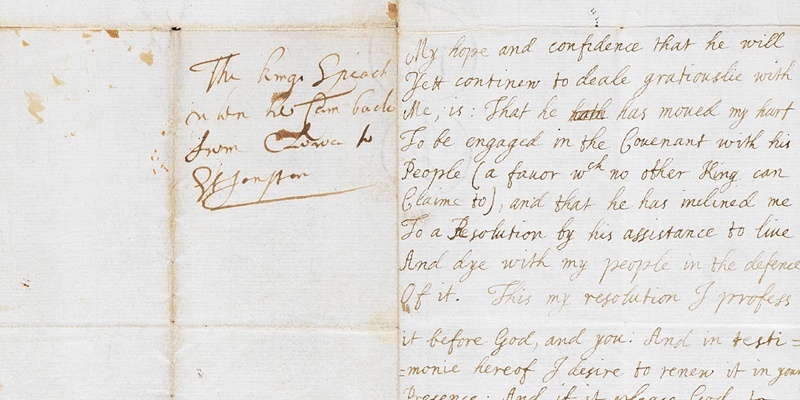A manuscript of royal apology made in Perth more than 300 years ago is expected to fetch between £8000 and £12,000 when it is auctioned in London.
The speech was delivered in Perth by Charles II on October 6, 1650, as the king pleaded with members of the Scottish Parliament in an attempt to escape from their control. After royalist support for his cause failed to materialise, the king was forced to issue the apology.
Written down the side of one page and folded into four panels, the king’s handwriting shows signs of the pressure he was under. The Scottish Parliament had declared Charles II the legitimate king of Great Britain soon after the execution of his father Charles I in 1649, and he arrived in Scotland in June the following year to claim his throne.
The Scottish Parliament was dominated by Covenanters who forced a reluctant Charles to agree to the promotion of their brand of Presbyterianism as a condition of their support.
In September 1650, Oliver Cromwell, at the head of the English Commonwealth army, routed Charles and his supporters at the Battle of Dunbar. Charles escaped to Perth, but soon wearied of the Covenanters and their demands, and on October 4 tried to flee — telling them he was going hawking.
This escape, known as “The Start,” was short-lived. The king had been counting on royalist supporters to rally to his cause, but they failed to show up in strength and, after a miserable and damp evening in the cottage in the village of Clova, he was forced back to Perth, where he made his apology.
Finally, recognising they needed each other, Charles and the Covenanters patched up their differences and, in 1651, Charles was crowned king of Scots at Scone Palace.
An abortive invasion of England followed, ending in defeat at the Battle of Worcester in September 1651, following which Charles fled to France.
In 1653 Cromwell was proclaimed Lord Protector of England, Scotland and Ireland, and it was not until after Cromwell’s death in 1658 that Charles was invited back to take the throne.
He entered London on 29 May 1660, his 30th birthday, and ruled for the next 25 years.
The letter will be sold at Bonhams in London on March 29 as part of a sale of papers and portraits belonging to Roy Davids, biographer, historian and manuscript dealer.
